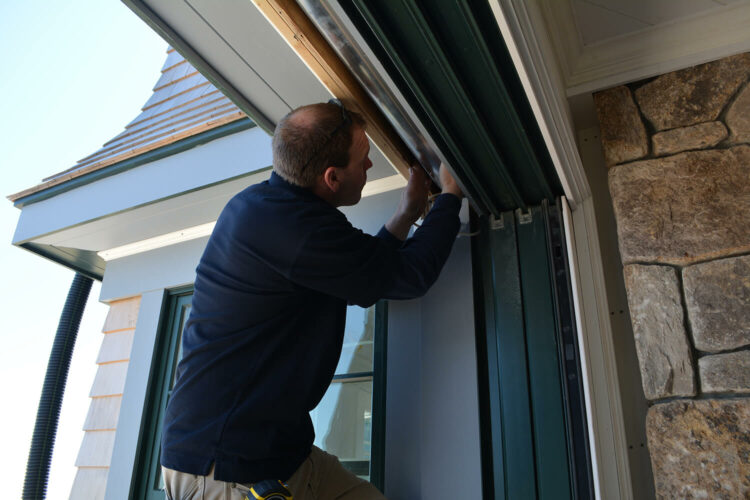
What Are the Benefits of Weatherstripping a Garage Door?
Many American homes have an expansive two-car garage, which forms a sizeable part of their home’s footprint. The garage door is the first line of defense against many outside challenges and needs to be maintained to be fully effective. With this in mind, homeowners need to install weatherstripping to help them save money and keep the door in good condition. So, what are the many benefits of weatherstripping garage doors, and how should you go about it?
Protecting Your Garage
Very few modern-day garages are air-conditioned or insulated, and they are therefore susceptible to those fluctuating temperature conditions. Unfortunately, this means that they can become very hot in summer and significantly cold in winter. These temperature variations can affect your home’s interior.
If you apply weatherstripping to those large garage doors, this can have a significant impact on your utility bills. It’ll also help maintain a more palatable temperature inside the garage, which is good for those stored vehicles.
Weatherstripping will also help to keep a certain amount of dust and debris in its place. You won’t find as much of it inside the perimeter during bad weather and won’t need to spend as much time cleaning up as you did. Goodquality weatherstripping will also keep any unwanted critters in their place, so you don’t have any nasty surprises when you venture into that space.
Good quality weatherstripping can also play its part if heavy rains cause local flooding. It may not be that effective if a nearby river breaks its banks, but it could keep things dry in most other situations.
There are even more benefits associated with good quality weatherstripping. You can prevent damage to the garage itself and all its ancillaries, as some of the weatherstrippings will prevent the bottom edge of the door from banging into the floor each time it’s closed. This will lessen wear and tear all around.
Without weatherstripping, the garage door may start to degrade. The bottom part of the door may sit in moisture, and even though the door itself may be designed to resist corrosion, you may nevertheless start to notice some pockets of rust or brittle metal in certain areas.
Inspecting Your Current Garage Door Weatherstripping
Your garage door may already be equipped with weatherstripping, but it may have become brittle and dry if it’s been a long time since you paid close attention to it. On a closer inspection, you may notice that it is cracking, and parts of it may have actually fallen away. If you stand inside the garage with the lights off, you may notice that you can see daylight around the perimeter of the door at certain points, indicating that there may be missing sections of weatherstripping. In this case, you will need to take action.
What Are the Different Types of Garage Door Weatherstripping?
One of the essential pieces of weatherstripping will be attached to the garage floor rather than the door itself. This will help seal the threshold and be particularly effective when you also have a door sweep in place. These products are made from aluminum, vinyl, or rubber and are kept in place with fixing the screws or a strong adhesive.
The door sweep is a lengthy strip of rubber that is attached to the bottom of the garage door with a retainer. When correctly situated, it will compress against the threshold seal, which will help to keep pests, debris, water, and unregulated air outside.
Many large garage doors are designed with individual panels that break apart as the door rolls up or down. You should install weatherstripping in between these panels so they seal the gaps when the garage door is closed. Most of these weatherstrips are made from flexible rubber specifically designed to create an even seal between all panels.
The door mechanism is typically installed within the outer holding frame that can be made of wood. Unfortunately, this does not represent a perfect seal, and in this situation, you should think about introducing PVC stop molding. This will be installed on the edge of the frame and close any gaps.
Depending on your style and type of garage door, there may be other types of weatherstripping. If you are unsure what you need, make sure that you consult a contractor with experience in this area or schedule a home inspection.
How to Install Garage Door Weatherstripping
You may wonder how difficult it is to replace some existing garage door weatherstripping.
- When you purchase threshold seals, you will typically get an industrial-strength, high-quality adhesive at the same time. Once you’ve cleaned the old sealant and prepared the surface, it’s relatively easy to introduce a new product.
- When it comes to the weatherstripping for the bottom of the garage door, most doors already have some form of aluminum channel ready to hold the door sweep gasket. More often than not, you simply slide the replacement into place.
- Doorstop weatherstripping can be purchased in rolls that can be cut to length using a sharp knife. You need to ensure that it is carefully attached using screws or weatherproof nails so that it creates a tight seal.
- As far as the panel weatherstripping is concerned, this may also be purchased in rolls that are self-adhesive. Once you’ve chosen the correct length, you just need to install a strip on the bottom or top edge of each panel.
Understanding the Benefits of Garage Door Weatherstripping
There are many benefits associated with installing weatherstripping on your garage door, and it’s certainly worth the effort for many of the benefits listed above.
Reaching Out for Advice
If you’re unsure whether you need to perform the work or would like some professional guidance to help you insulate your home more effectively and save money, enlist the services of a professional home inspection service. Get in touch with Pro Inspect Solutions for help in the Orlando area. We advise homeowners on how to keep their homes running as smoothly as possible to protect their investments.



